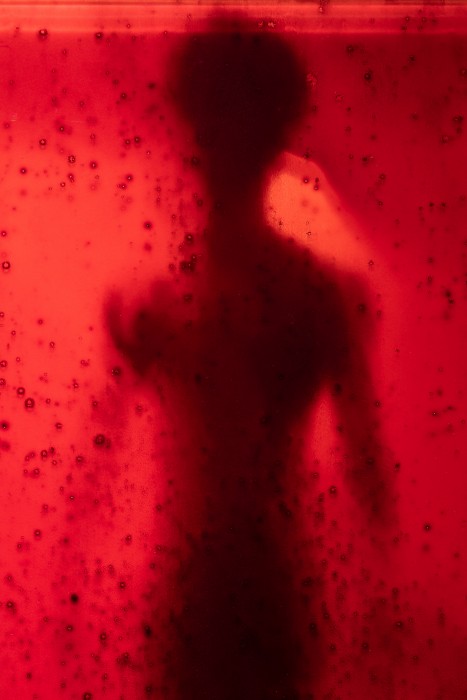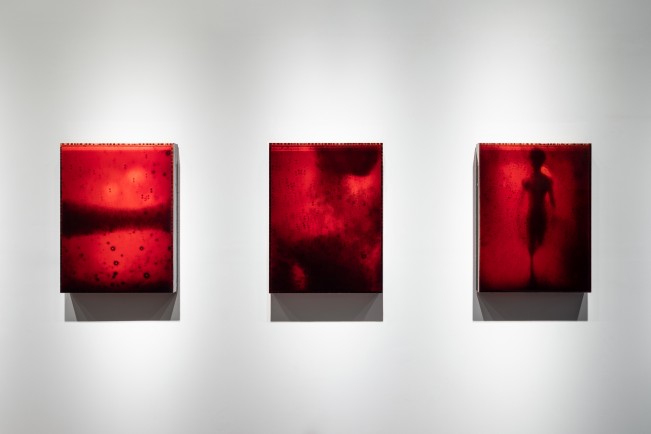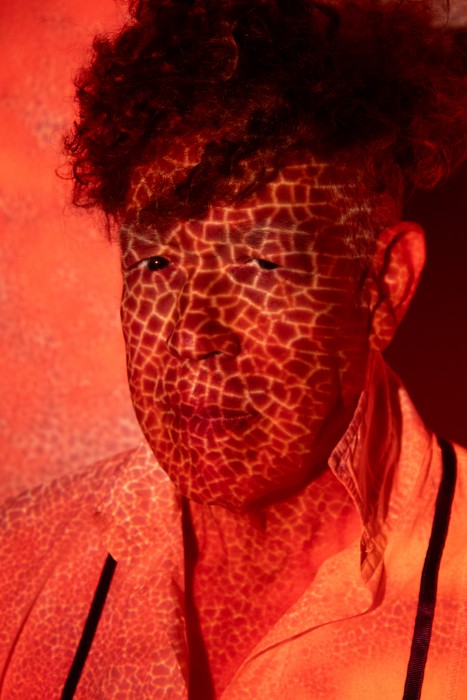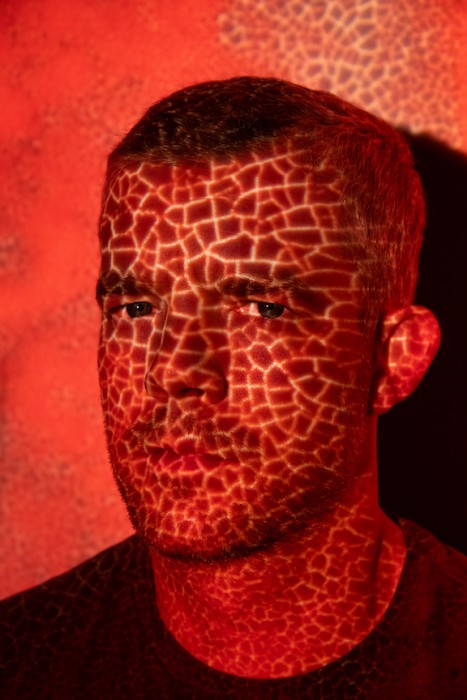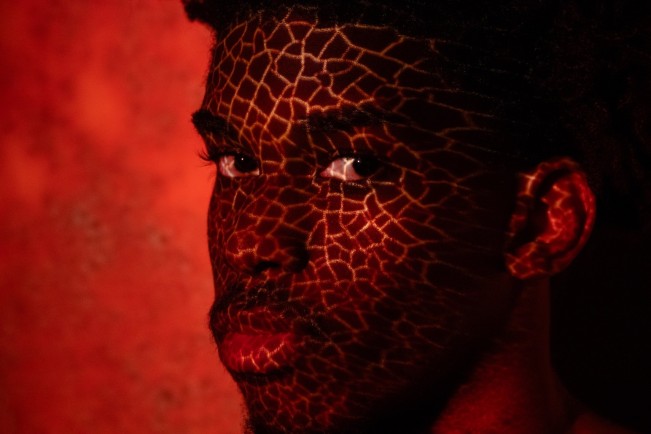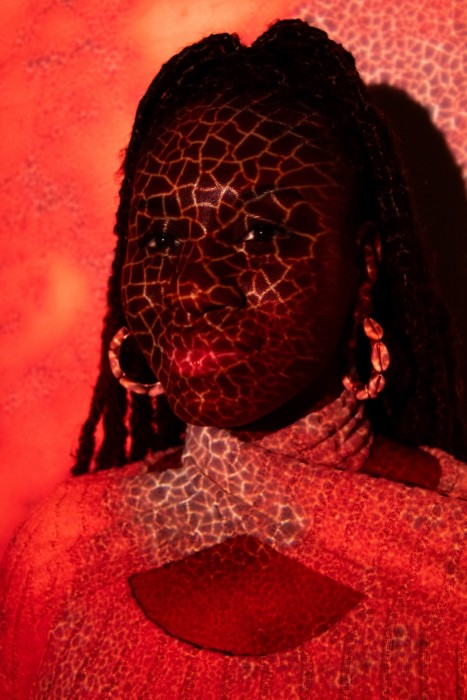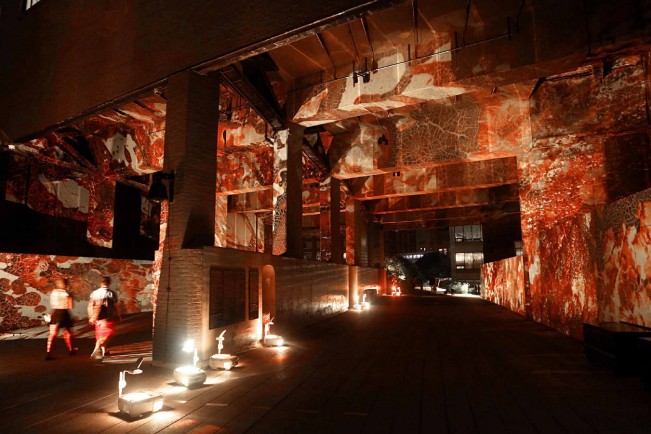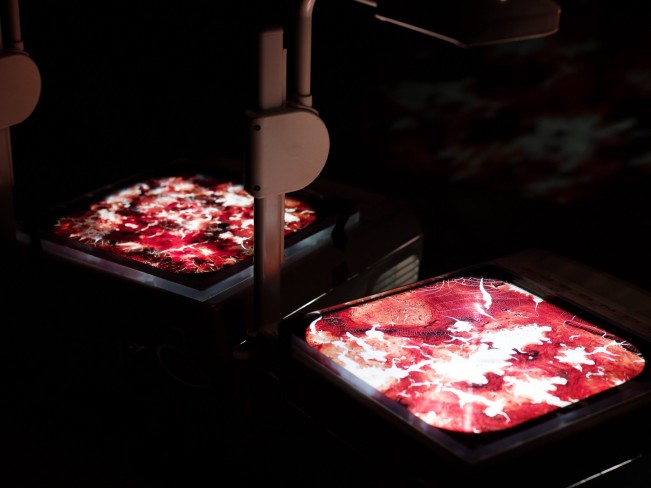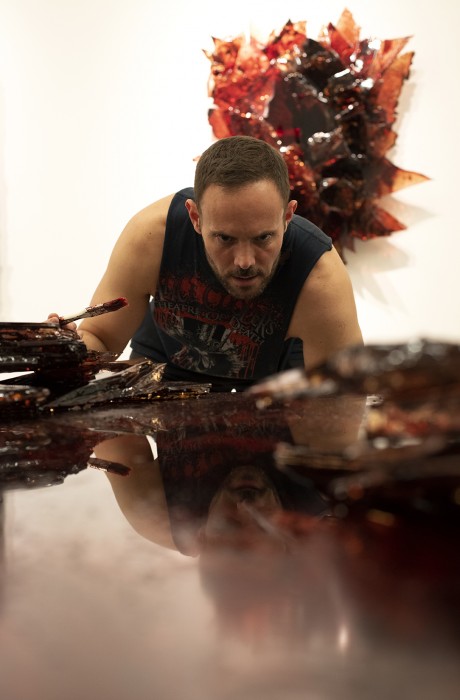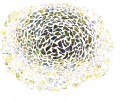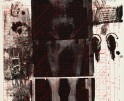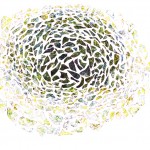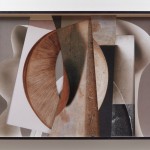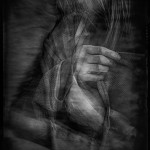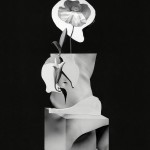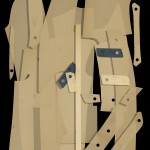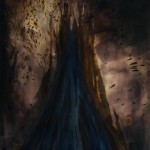Jordan Eagles in Conversation with Douglas Breault
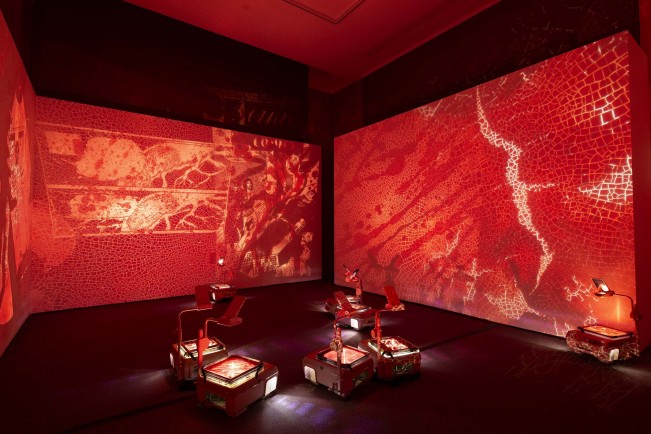
© J.Paul Getty Trust, 2024 Jordan Eagles, Installation of “Illuminations” at the Getty Center, Los Angeles
The past does not simply stay in the past. As social progress and equality in the United States continues to limp along like a dying animal, Jordan Eagles harnesses the visceral power of real blood in his artwork as a medium for activism and social critique. Blood, laden with universal themes such as birth and death, healing, and pain, becomes a potent symbol in Eagles’ recent work, which advocates for equitable blood donation policies, challenges stigma, and champions LGBTQ+ equality. Blood is inherently ephemeral, decaying with the body at the end of life or drying when exposed to air. Eagles ethically sources and preserves animal and human blood with resin, extending its vitality beyond the corporeal. His work meditates on the lingering lesions of American history, such as the long-term consequences of the Reagan administration during the AIDS epidemic, while also contending with the perilous future of the nation with a newly elected incompetent president.
Eagles incorporates blood as the nucleus of a multidisciplinary practice that spans sculpture, painting, installations, photography, and public programming. His installations often immerse the space with projections of blood slides onto walls that feel reminiscent of stained glass windows, yet his work transcends violence or grotesque imagery. Rather than focusing on blood spilled, it explores blood as the essence of life—a vital force that sustains the heart and body. Andres Serrano famously engaged with blood in his artwork Piss Christ, emphasizing the duality of spirit and human form in the depiction of Jesus Christ represented by a crucifix suspended in a jar of body fluids, which continues to rattle folks as a controversial artwork nearly 40 years after its creation. Bodies are inherently political in the United States, and inexplicably always linked with Christian belief systems. Eagles’ work reduces the body to its essential, universal source of a beating heart. These installations present blood in a sacred and scientific manner, creating a hypnotic experience that bridges the personal body with a collective humanity. The microscopic and celestial patterns evoke a connection to one’s own body and the fears and hopes connected to maintaining life. Eagles crafts a space between the physical and the metaphysical, using the warmth of red as a reminder our bodies have the same rules of sustaining life and questioning death.
In his latest series, Eagles layers photographs of figures and abstractions of bodies and limbs taken through life-sized blood screens. These images are printed onto translucent substrate panels and preserved with blood and resin. The process fuses photographic origin and organic material, further abstracting the visuals and creating objects that filter light through multiple layers. This new body of work will be showcased by New Discretions at the New Art Dealers Alliance fair in Miami, Florida, from December 3 to December 7, 2024.
As an artist and activist for LGBTQ equality, how has your work continued to shift over time in response to the current social climate?
More than a decade ago I saw a way to advocate for LGBTQI+ equality through my work by collaborating with individuals from the community and using their donated blood to try and make change. Up to that time, I had been working exclusively with blood from slaughterhouses, which I still do, for projects that are more about spirituality and material. Although my queer blood works have specifically addressed discriminatory blood donation policies, they are designed to speak to larger issues of full equality. I was infuriated by the discrimation and how the polices perpetuated decades long stigma related to HIV and gay sex. For the first time in my work, I thought about how I could collaborate with gay, bisexual, and transgender men to challenge these inequities and give a collective voice through art. Blood Mirror was my first queer blood work. It is a sculpture containing the blood of 59 donors preserved in resin in which the unique life stories became part of the work. Over time the policies shifted in various ways, remaining biased regardless of political party or who is in power. Additional projects have referenced American pop culture, science and technology. A recent project was an outgrowth of my experiments with Artificial Intelligence as it relates to policies and depictions of queer men.
What interests you in portraiture with your work?
Working with people–live human beings–is exciting to me. In 2009, I started taking photographs of bodies and making portraits with blood patterns projected on everyone. I love how the organic patterns look so natural on the face and body, almost like creating a new layer of skin. Over the years, I have been given the opportunity to stage immersive installations at museums and cultural institutions. As part of these presentations, I have created what you might describe as live photo sets where visitors can sit for a formal portrait, engaging with their own personal histories with HIV and LGBTQI+ equality. Seeing blood, typically contained within, presented on the outside, becomes a powerful symbol of our shared humanity, the life force that flows through us all.
What artists and writers inspire you?
Initially my primary influences came from an ongoing interest in science and philosophical ideas about body and spirit, including mediation. Nature, the cosmos, and thoughts around preservation and regeneration provided enormous inspiration. I was prompted to make art with blood for the first time after viewing black-and-white line drawings about childbirth from a medical encyclopedia. Over time, as I became more knowledgeable about contemporary art, I found many artists from whom I have drawn inspiration. I can endlessly stare at works by Rothko and have returned to MOMA repeatedly to view his work, and I am always transported to another dimension. Warhol was a fascinating innovator and I am constantly overwhelmed by his range of images and ideas. His oxidation paintings made with urine are among my favorites. David Wojnarowicz channeled his legitimate anger into powerful works and performance. The past few years I have really come to respect and admire Tracy Emin. Her vulnerability and openness to sharing her personal medical trauma in the face of death so publicly is remarkable and she continues to use her own life and body as inspiration to create such amazing new paintings.
Where do you think the themes of your work will go next?
I am still very interested in themes relating to the body, spirit and equality. I have a new series that merges photography, painting and sculpture. In these works, I photographed a model, through life-sized blood screens, that serve as the underpaintings or first layer if you will. I then transferred these images of the body and limbs onto translucent substrate panels and preserved them within multiple layers of blood and resin. The construction merges the original photographic image with the organic material, creating layered compositions that further abstract and allow light to filter through the object. I am also currently working on a new queer blood series that utilizes archival photos and documents to address equality, stigma and the tribalism that perpetuates issues of identity.
Jordan Eagles (b. 1977) is an artist who has been exploring the aesthetics and ethics of blood as an artistic medium since the late 1990s. He lives and works in New York City. Eagles’ works are held in numerous private and public collections including the Addison Gallery of American Art, Everson Museum of Art, Peabody Essex Museum, Princeton University Art Museum, The Rose Art Museum, University of Michigan Museum of Art and Wellcome Collection. Recent exhibitions, installations and public programs include the Getty (Los Angeles), High Museum of Art (Atlanta, GA), The Andy Warhol Museum (Pittsburgh, PA), Leslie-Lohman Museum of Art (New York, NY), Museum of the City of New York, Birmingham Civil Rights Institute (Alabama), The High Line (New York, NY) and Hammer Museum (Los Angeles, CA). Eagles collaborated with the NYC Department of Health and Mental Hygiene on NYC Blood Sure and—in partnership with GMHC and FCB Health—is a co-founder of Blood Equality.
Follow Jordan Eagles on Instagram: @jordaneagles
Douglas Breault is an interdisciplinary artist who overlaps elements of photography, painting, sculpture, and video to merge spaces both real and imagined. His work has been collected, published, and exhibited nationally and internationally, including at the Museum of Fine Arts Boston, the Czong Institute for Contemporary Art (South Korea), Space Place Gallery (Russia), the Bristol Art Museum, the Rochester Museum of Fine Arts, Amos Eno Gallery, and VSOP Projects. Breault has been an artist in residence at MassMoca and AS220 and was awarded the Montague Travel Grant to study in London and Paris in 2017. Douglas is a professor of art at Babson College and Bridgewater State University, and he has been a guest critic at MassArt, Wellesley College, Kansas City Art Institute, and the Slade College of Art, among others. Douglas is the Exhibitions Director at Gallery 263 in Cambridge, MA. He received his MFA from the School of the Museum of Fine Arts at Tufts University and a BA in Studio Art from Bridgewater State University, and he currently divides his time between Boston, MA, and Providence, RI.
Follow Douglas Breault on Instagram: @dug_bro
Posts on Lenscratch may not be reproduced without the permission of the Lenscratch staff and the photographer.
Recommended
-
The Female Gaze: Alysia Macaulay – Forms Uniquely Her OwnDecember 17th, 2025
-
Bill Armstrong: All A Blur: Photographs from the Infinity SeriesNovember 17th, 2025
-
Robert Rauschenberg at Gemini G.E.LOctober 18th, 2025
-
Erin Shirreff: Permanent DraftsAugust 24th, 2025
-
Shelagh Howard: The Secret KeepersJuly 7th, 2025

